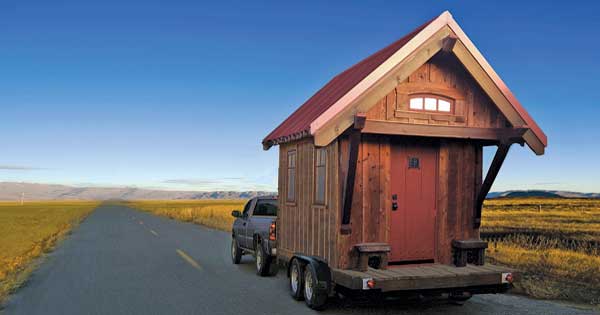
Seventeenth-century common law made every Englishman’s home his castle, and 20th-century architect Mies van der Rohe said that less is more. Jay Shafer, a figure in the 21st-century small-house movement, subcribes to both notions, especially leaning more toward less: less house equals better living. He has been designing space-efficient, small-footprint houses for years; thousands of his build-it-yourself designs have been sold.
When you think small footprint, think one shoe. Most Shafer houses range from 100 to 300 square feet, probably more wee than Kim Kardashian’s closet. His designs can be seen as intense expressions of maximizing space without inducing claustrophobia. Most houses can be built for $45,000, including labor.
A current project, scheduled for completion next year, is a co-op village of portable houses in Sonoma County, California. “In many ways, tiny houses work best in concert with other tiny houses and shared amenities,” he says.
Besides designing (and living in) tiny homes, Shafer, the author of The Small House Book, hosts workshops in Sonoma and frequently speaks out against local zoning regulations across the United States that outlaw or discourage small houses. Since the recent housing bust, he says, “some of us are putting more stock in [the efficient use of space] than in resale speculation, and putting quality of space before quantity.
“If smaller houses aren’t the wave of the future, they are at least a significant ripple on the wave.”


